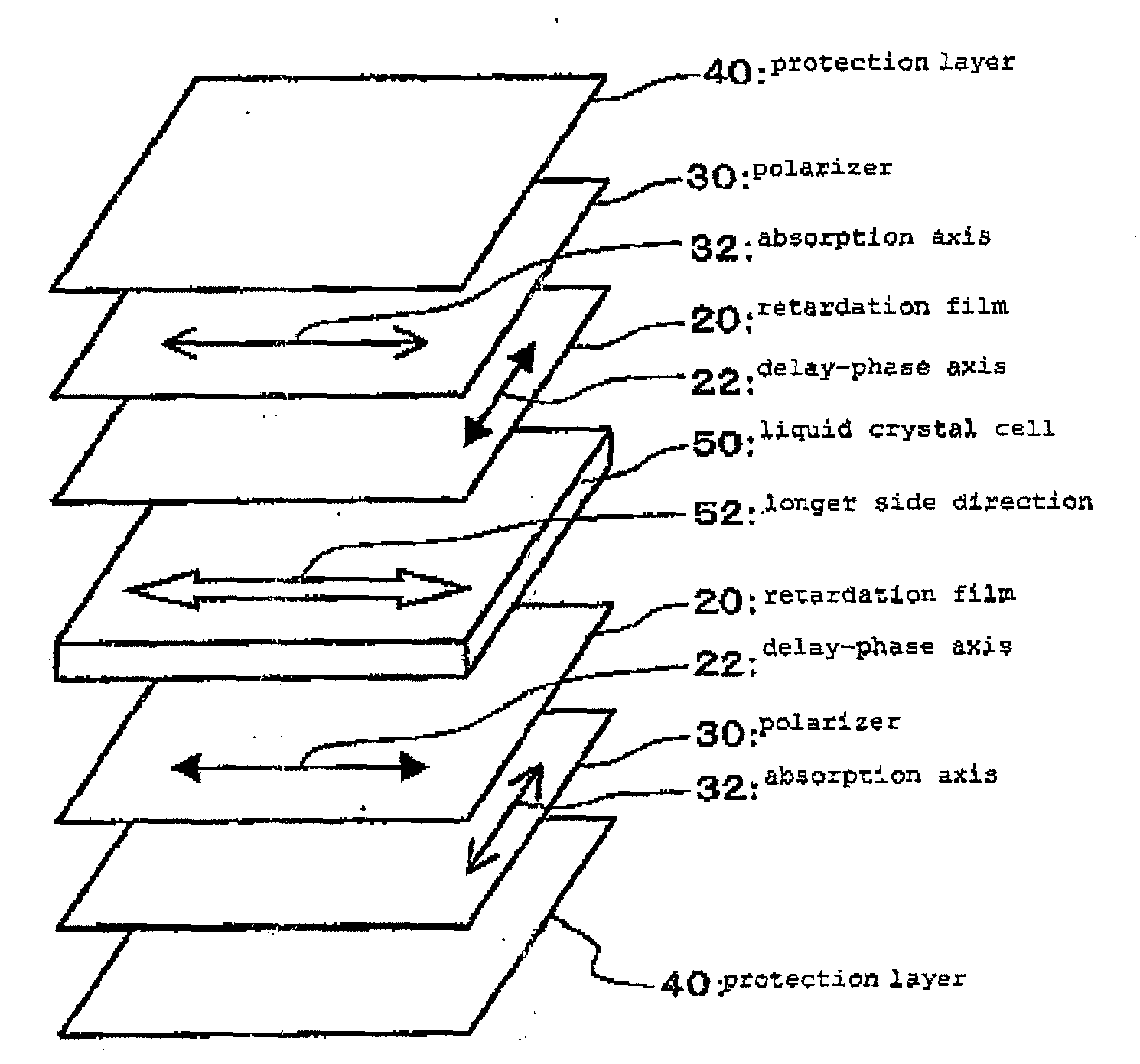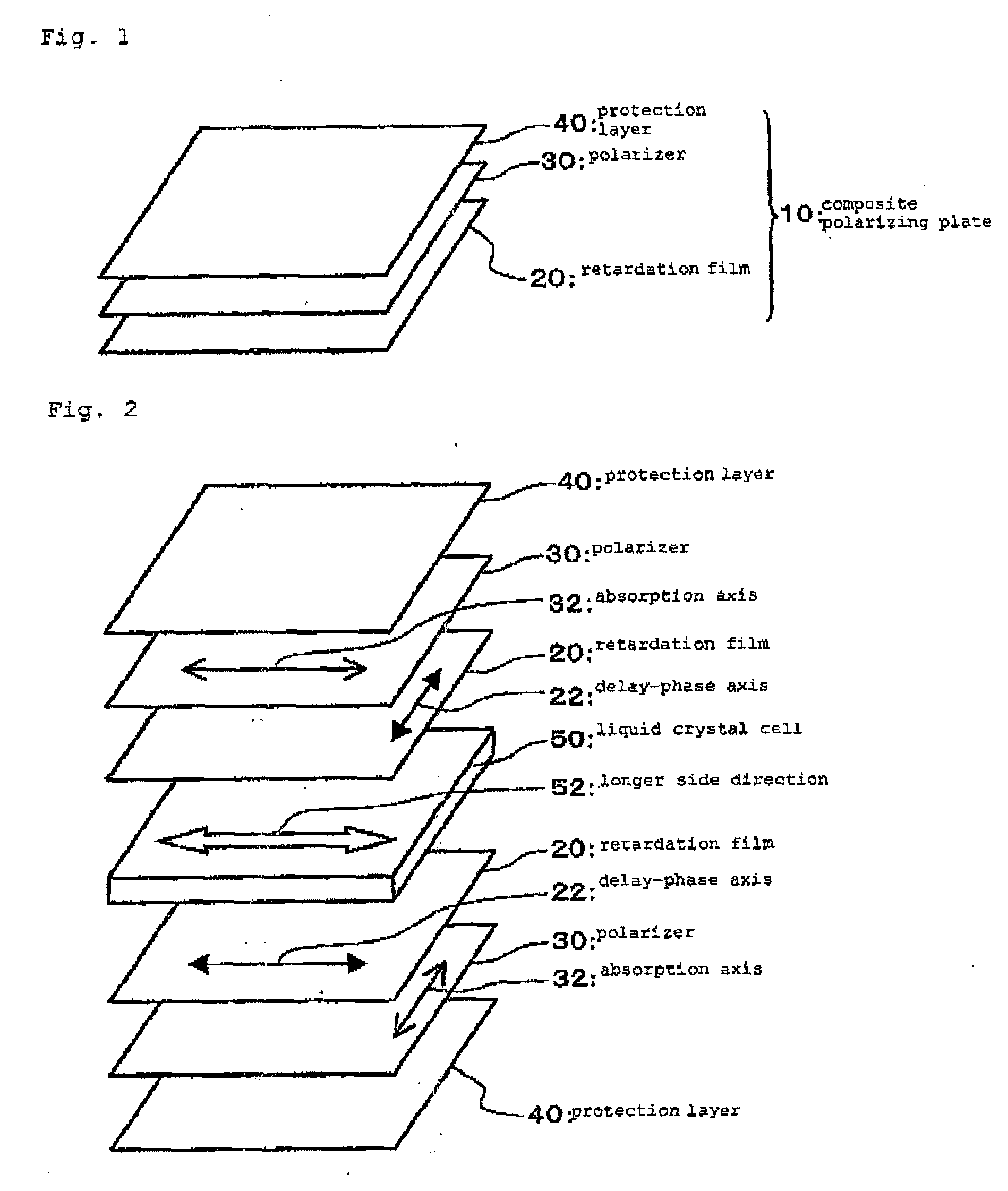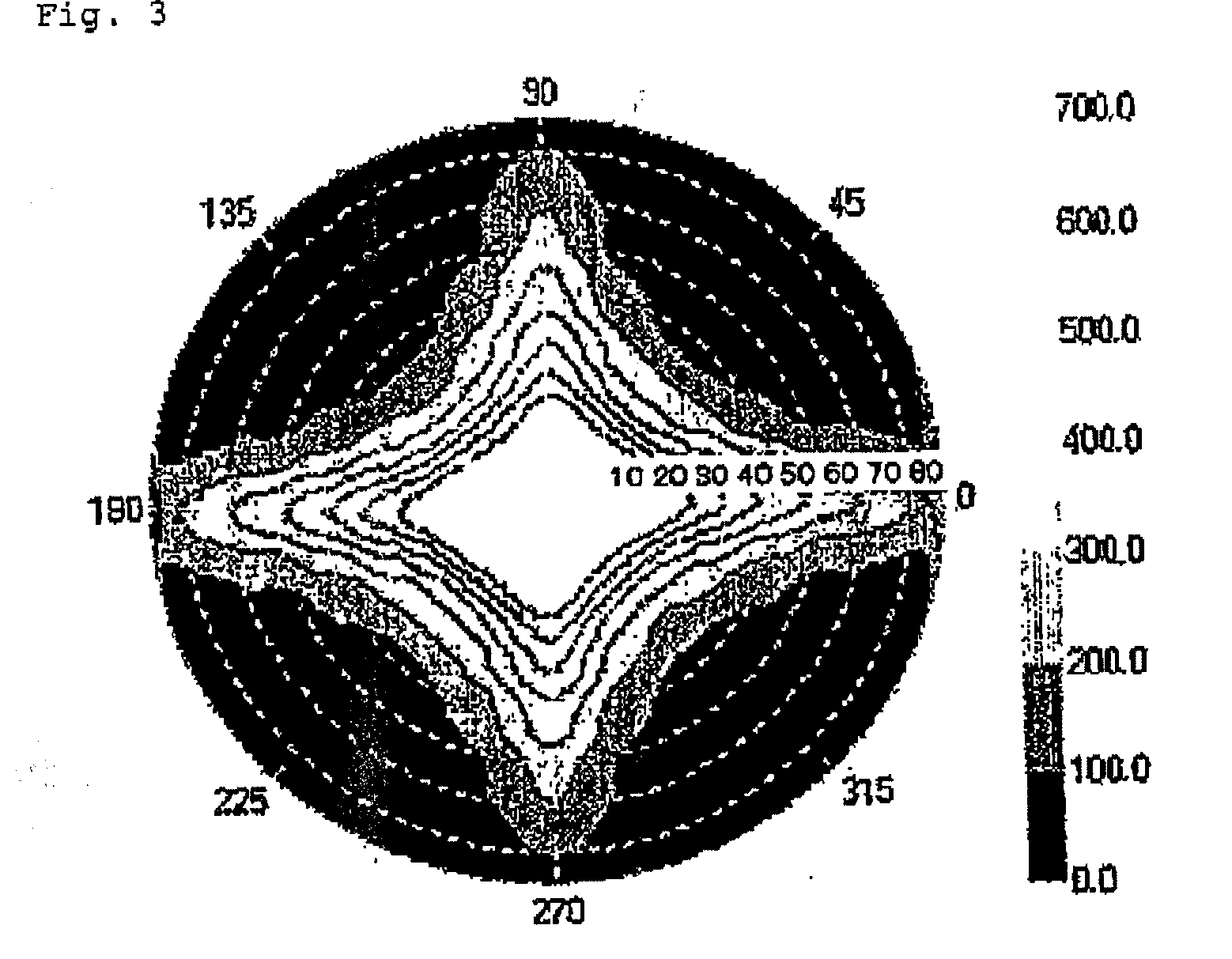Composite polarizing plate and liquid crystal display using the same
a technology of liquid crystal display and polarizing plate, which is applied in the direction of polarizing elements, instruments, optics, etc., can solve the problems of difficult retardation, poor adhesive properties, and inability to obtain desired adhesive force in some cases, so as to suppress the increase the resin pressure, and suppress the effect of deterioration and decomposition of polypropylene resin
- Summary
- Abstract
- Description
- Claims
- Application Information
AI Technical Summary
Benefits of technology
Problems solved by technology
Method used
Image
Examples
example 1
(a) Preparation of Adhesive
[0102]A water-based adhesive of the following composition was prepared. This was used as a water-based epoxy adhesive. Polyvinyl alcohol resin 3 parts
(“KL-318” made available by Kuraray Co., Ltd.)
Water-soluble polyamide epoxy resin 1.5 parts
(“Sumirez Resin 650” made available by Sumitomo Chemtex Co., Ltd., aqueous solution of 30% solid matter concentration) Water 100 parts
[0103]Further, another water-based adhesive of the following composition was prepared. This was used as a urethane type adhesive.
Polyester type ionomer urethane resin 30 parts
(“Hydran AP-20” made available by DIC Corporation, aqueous solution of 30% solid matter concentration)
Isocyanate type crosslinking agent 7.5 parts
(“Hydran Assister C-1” made available by DIC Corporation) Water 5 parts
[0104]Further, “Aron Alpha”, a cyanoacrylate type instant adhesive commercialized by Konishi Co., Ltd. was used as another adhesive.
[0105]Furthermore, as another adhesive, a solvent-free type epoxy ultra...
example 2
[0109]After a film was produced by melting and extruding the crystalline polypropylene type resin of the propylene / ethylene random copolymer same as that used in Example 1, the film was stretched by successive biaxial stretching in order to vertical stretching and transverse stretching to obtain a retardation with a thickness of 21 μm and Ro=60 nm and Rth=115 nm. A polarizer comprising a protection layer of a triacetyl cellulose film stuck to one face of a polyvinyl alcohol / iodine type polarizer was prepared and the retardation film obtained in the above-mentioned manner was stuck to the polarizer face by the water-based epoxy adhesive described in Example 1 to obtain a composite polarizing plate. The thickness of the composite polarizing plate was 122 μm and was thus made thinner than that of a polarizer obtained by sticking a protection layer of a 80 μm-thick triacetyl cellulose film to both face of the polarizer. If a 40 μm-thick triacetyl cellulose film was used, the thickness o...
example 3
[0110]After a film was produced from the same propylene / ethylene random copolymer as that used in Example 1, successive biaxial stretching was carried out to obtain a biaxial retardation film. This retardation film has R0=55 nm and Rth=115 nm. Corona discharge treatment was carried out for the surface of this retardation film. The corona discharge treated-face of the retardation film was stuck to one face of a polyvinyl alcohol / iodine type polarizer and a triacetyl cellulose film treated by saponification was stuck to the other face of the polarizer using the water-based epoxy adhesive shown in Example 1 and thereafter, drying at 80° C. for 5 minutes was carried out and curing at 40° C. for about 60 hours was carried out to obtain a composite polarizing plate. At that time, the absorption axis of the polarizer and the delay-phase axis of the retardation film were arranged to be rectangular each other.
[0111]Next, “BRAVIA 32”, a liquid crystal television, manufactured by Sony was disa...
PUM
| Property | Measurement | Unit |
|---|---|---|
| thickness | aaaaa | aaaaa |
| thickness | aaaaa | aaaaa |
| thickness | aaaaa | aaaaa |
Abstract
Description
Claims
Application Information
 Login to View More
Login to View More - R&D
- Intellectual Property
- Life Sciences
- Materials
- Tech Scout
- Unparalleled Data Quality
- Higher Quality Content
- 60% Fewer Hallucinations
Browse by: Latest US Patents, China's latest patents, Technical Efficacy Thesaurus, Application Domain, Technology Topic, Popular Technical Reports.
© 2025 PatSnap. All rights reserved.Legal|Privacy policy|Modern Slavery Act Transparency Statement|Sitemap|About US| Contact US: help@patsnap.com



